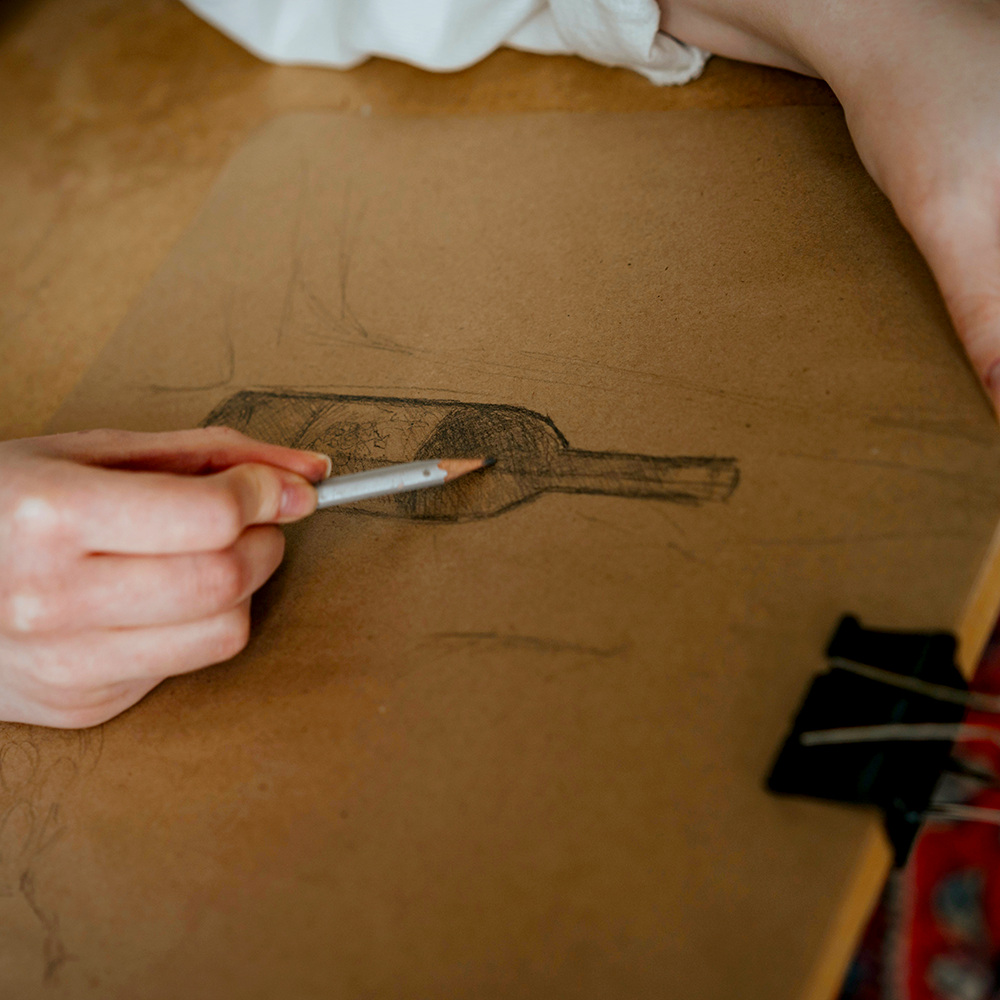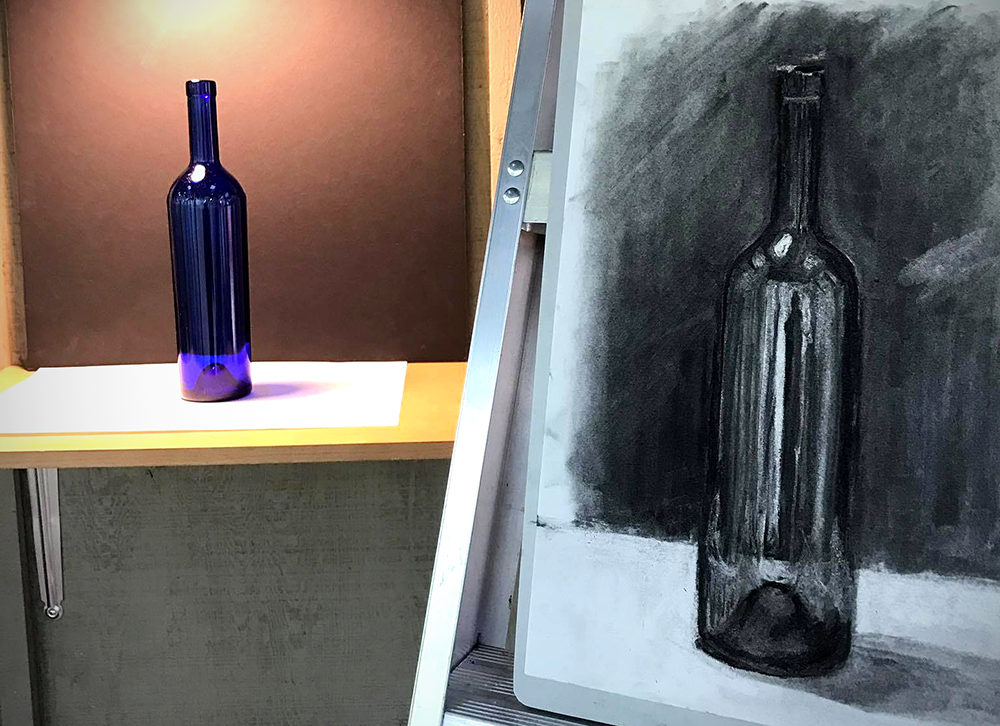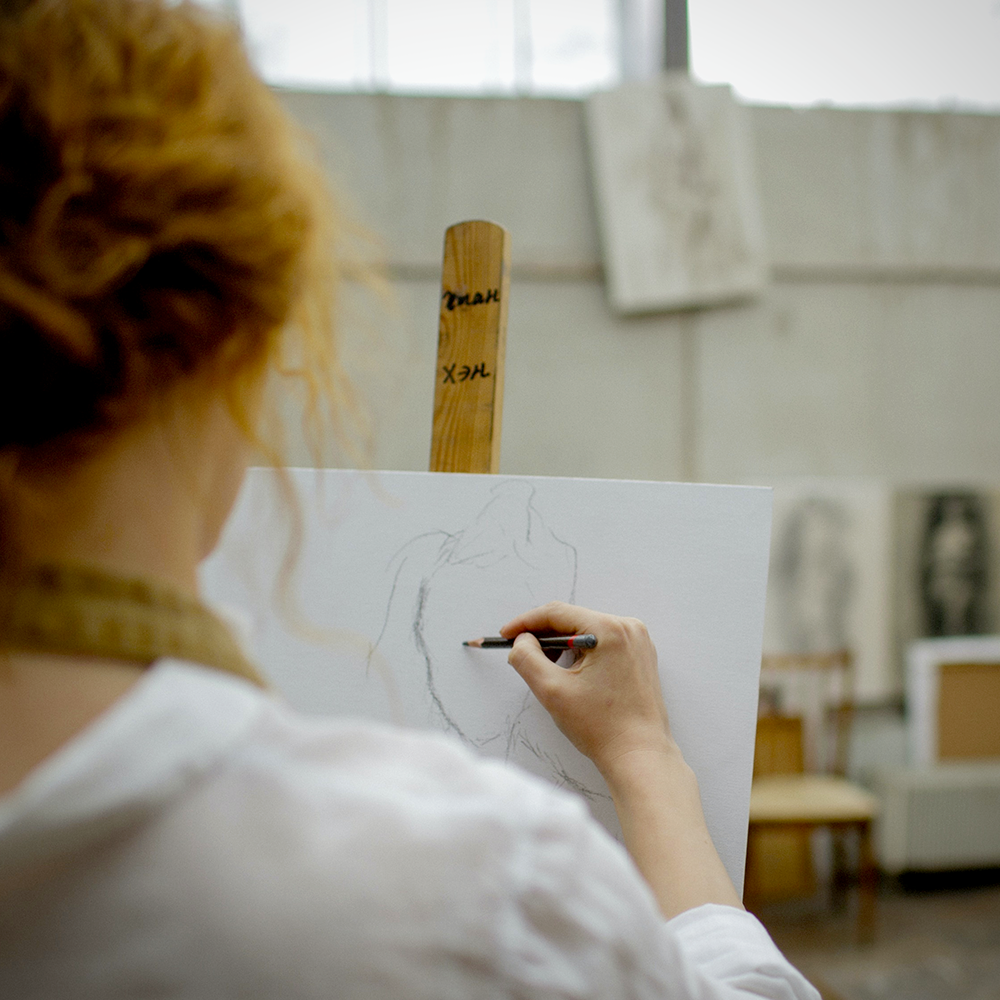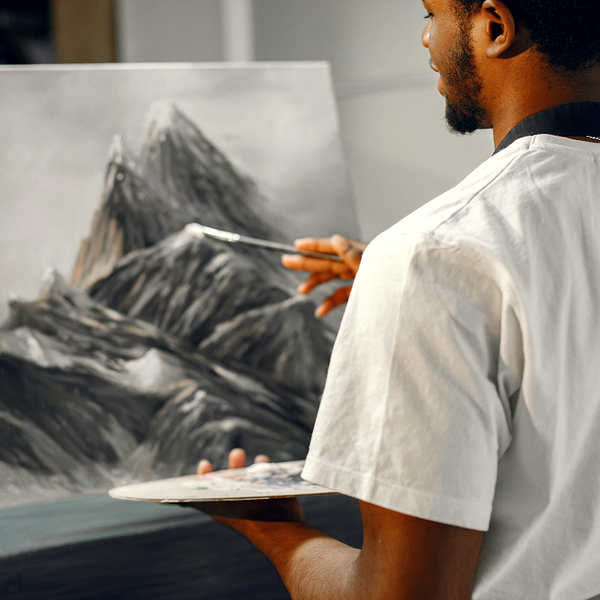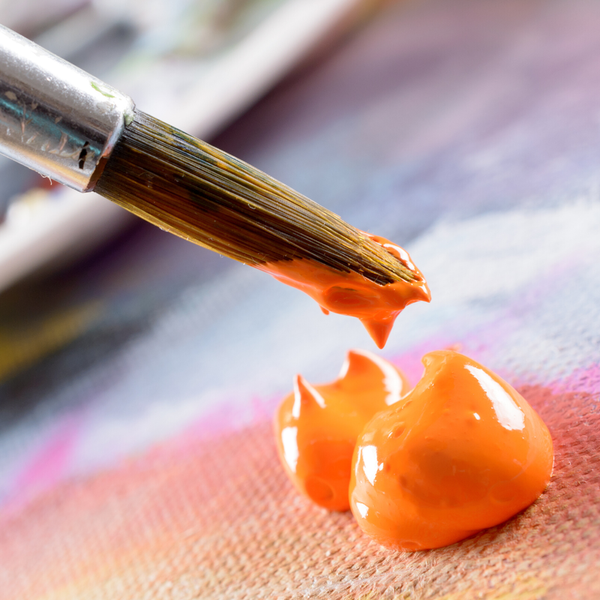Charcoal drawing is a beautiful and timeless medium.
When done well, charcoal drawings can look incredibly lifelike and realistic.
In this blog post, we'll discuss the basics of charcoal drawing, including some tips and tricks to help you get started.
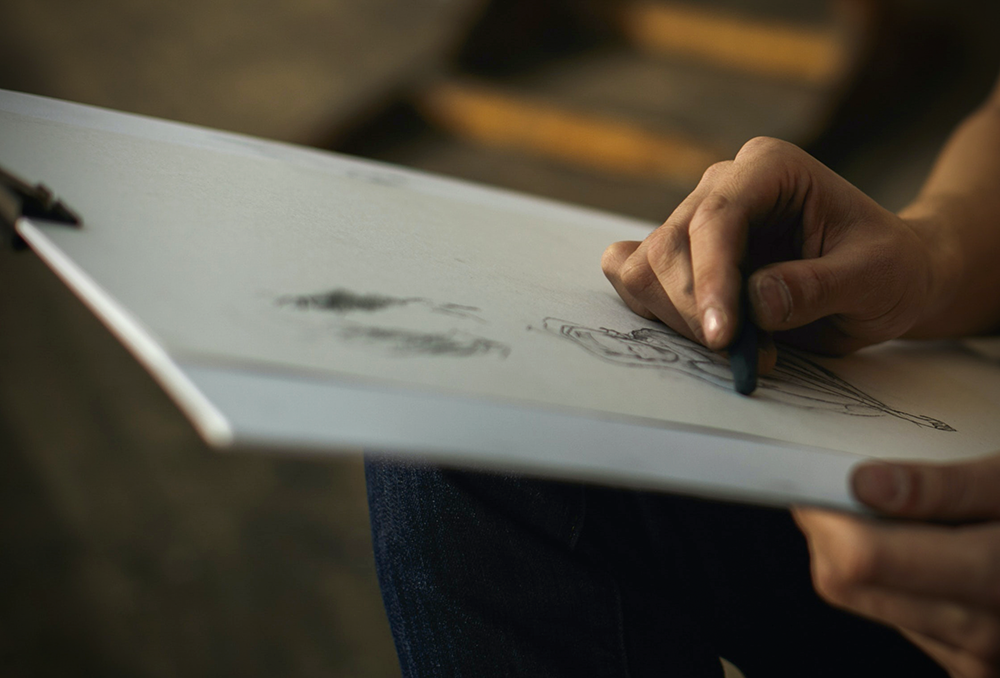
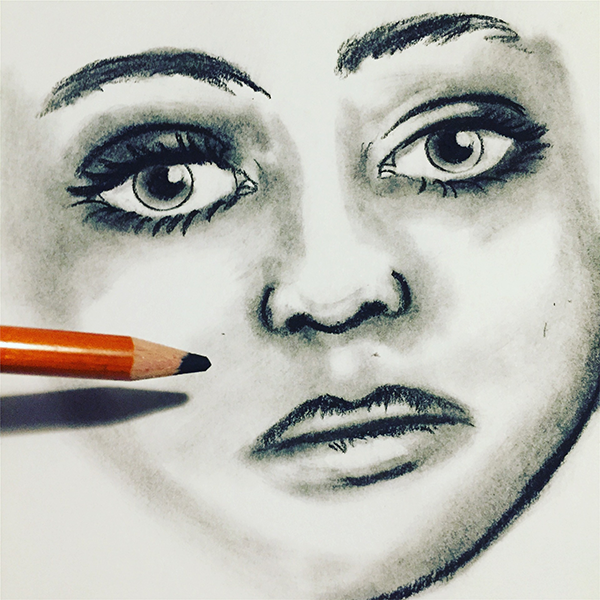
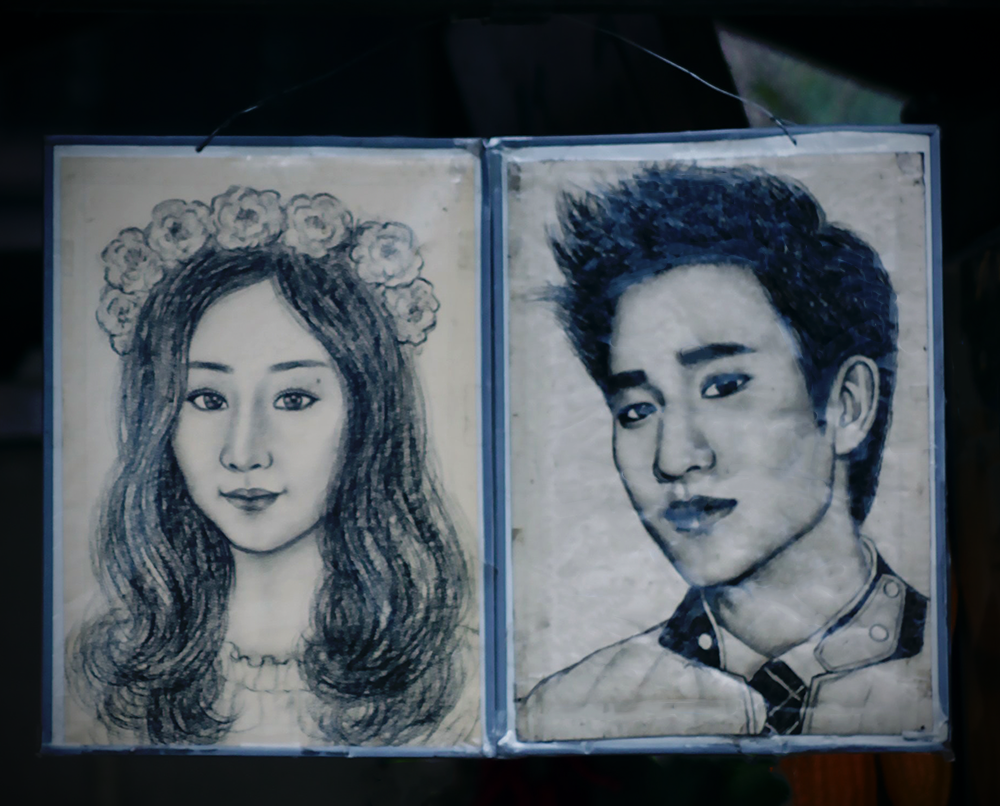
What is Charcoal?
Charcoal is a black or dark gray substance that is made by burning wood or other organic materials in a low-oxygen environment.
The resulting product is a porous, lightweight material that is ideal for drawing.
Black charcoal is the most common type, but there are also white and colored charcoals available.
Charcoal is great for creating thick and thin lines, and can be used to create a variety of different effects.
When creating charcoal drawings, artists will often use multiple types of charcoal to create different effects.



Types of Charcoal
There are two main types of charcoal that artists use are willow charcoal and vine charcoal.
Willow charcoal is made from burning willow wood, while vine charcoal is made from burning grapevines.
Each type of charcoal has its own unique properties, so it's important to experiment with both to see which one you prefer.
Willow charcoal is softer and more pliable than vine charcoal, making it ideal for creating detailed drawings.
Vine charcoal, on the other hand, is harder and produces a darker mark on the paper.
It's also less likely to smudge, which can be helpful if you're working on a large drawing.
There is also compressed charcoal sticks, which are made by pressing charcoal particles together under high pressure.
Compressed charcoal comes in both hard and soft varieties, and it can be a good middle ground between vine and willow charcoal if you can't decide which one to use.
You can also find charcoal pencils, which are pencils that have a core made of charcoal.
Charcoal pencils are convenient because they're easy to carry around and they don't create as much of a mess as loose charcoal.
A soft charcoal pencil is great for detailed work, while a hard charcoal pencil can be used for bolder strokes.
If you're looking to add a bit of color to your art, conte crayons are another option.
Conte crayons are made from a mixture of charcoal and clay, and they come in a variety of colors.
They're easy to use and they produce a soft, velvety mark on the paper.
Powdered charcoal, on the other hand, is a type of charcoal that comes in a jar or tube.
It's made by grinding charcoal into a fine powder, and it can be used to create a variety of effects.
For example, you can use it to create a smoky look, or you can use it to add texture to your drawing.


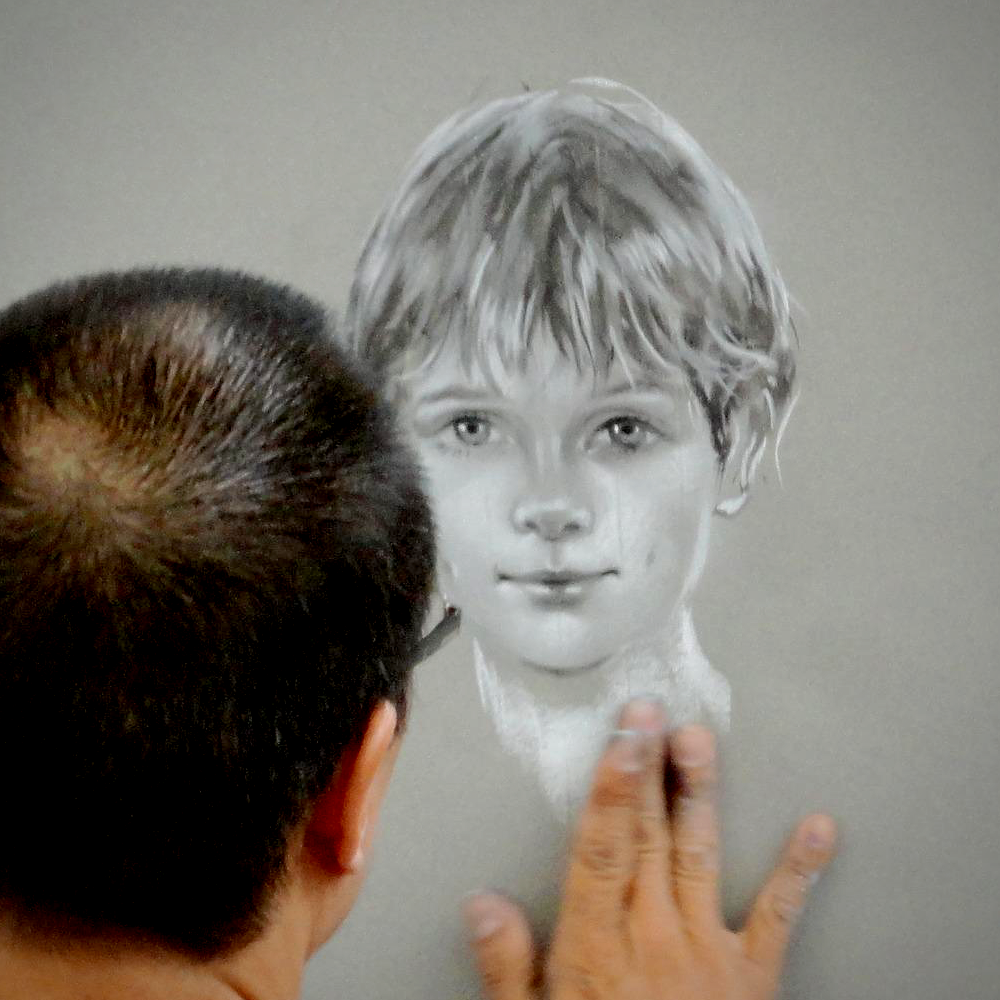
How to Draw With Charcoal
Now that you know a little bit about the different types of charcoal available, let's talk about how to actually draw with it!
The great thing about charcoal is that it's very forgiving.
If you make a mistake, you can simply erase it and start over.
You can also add shading and highlights to your drawing by smudging the charcoal with a paper towel or your fingers.
When you're first starting out, it's a good idea to practice on a scrap piece of paper before you tackle your final project.
This will help you get a feel for how the charcoal behaves and how much pressure you need to apply to the paper.
Also, kneaded erasers are your friend!
These erasers can be molded into any shape, which makes them perfect for erasing small areas without disturbing the rest of your drawing.

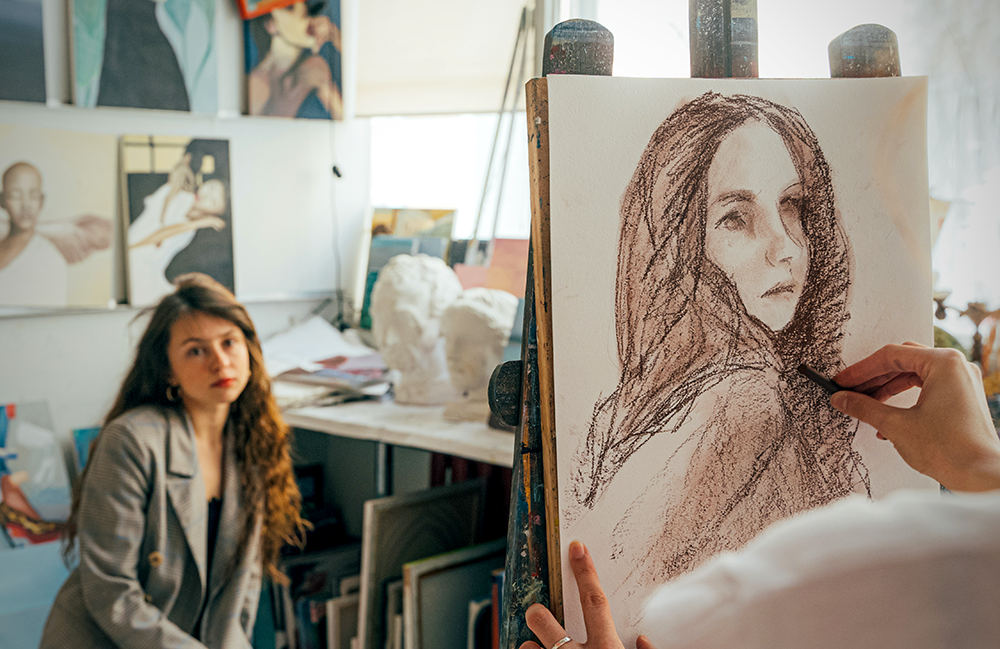

Charcoal Drawing Techniques
There are a few different charcoal drawing techniques that you can use to create different effects.
Here are a few of the most popular:
- The hatching technique is used to create shadows and depth in a drawing. To hatch, you simply draw a series of closely spaced parallel lines. The closer together the lines are, the darker the shadow will be.
- Crosshatching is a variation of hatching that involves drawing intersecting sets of parallel lines. This technique is often used to create more complex shadows and highlights.
- Stippling is a technique that involves using small dots to create shading and texture. The more dots you use, the darker the area will be. This technique can be used to create a range of different effects, from soft shadows to gritty textures.

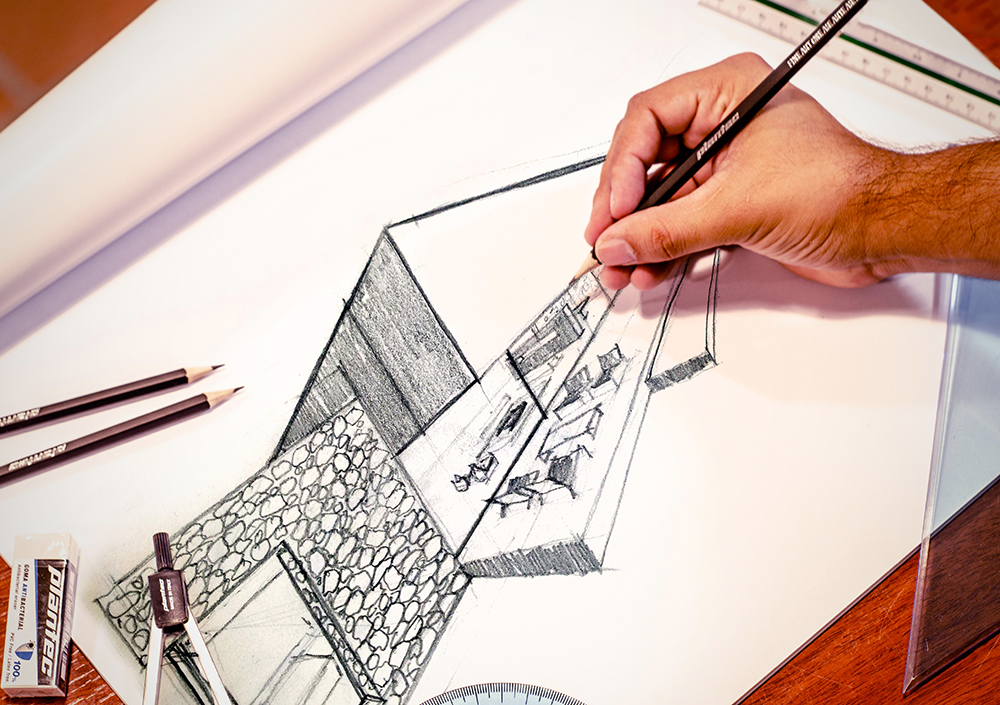
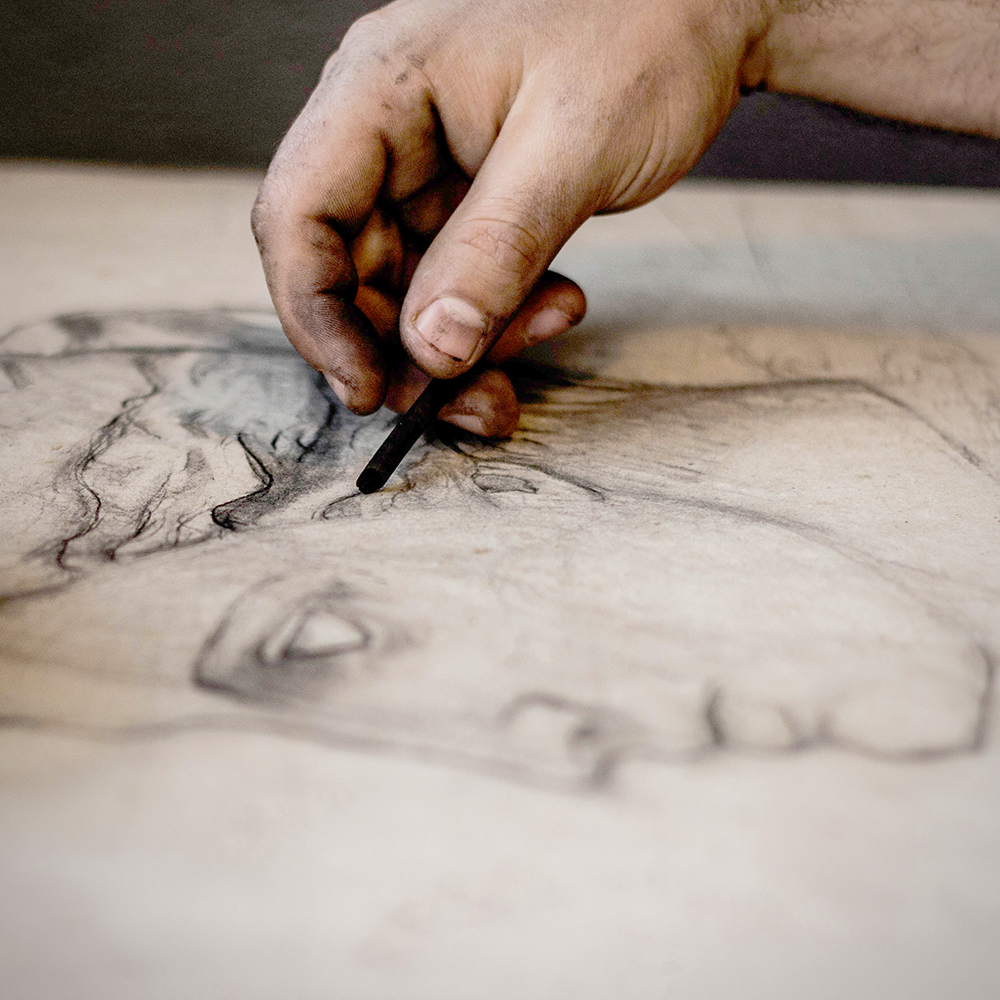
Charcoal Tips and Tricks
Here are a few tips and tricks to help you get the most out of your charcoal drawings:
- One of the best ways to start your drawings is to create charcoal sketches. This will help you plan out the composition of your drawing and figure out where to add shadows and highlights.
- Use different types of charcoal to create different effects.
- A white charcoal pencil is a great way to add highlights.
- Charcoal paper is a great drawing surface because it's textured and it will help the charcoal adhere to the paper. Pastel and watercolor paper are other great alternatives.
- Experiment with smudging and blending techniques to create shadows and highlights.
- Use a light touch when first starting out. It's easy to go overboard with charcoal and end up with a drawing that looks too dark. So start light and gradually add more pressure as needed.
- Experiment with different strokes to create different effects. For instance, using long, sweeping strokes can create soft lines, while short, sharp strokes can create sharper lines.
- A blending stump is a great resource for softening and blending your charcoal lines; it will help you create easy charcoal drawings.
- Be mindful of the amount of pressure you're using. Too much pressure can cause your charcoal to break, which can be frustrating (not to mention messy).
- Use a kneaded eraser to selectively erase parts of your drawing.
- Use a fixative to spray your drawing and prevent the charcoal from smudging.
- Practice, practice, practice! Like with any skill, the more you practice, the better you'll become at drawing with charcoal.
- If you need help sparking your creativity, there are plenty of creative charcoal drawing ideas online. Take a look around and see what inspires you!
Now that you know the basics of charcoal drawing, grab a pencil and some paper and give it a try!
With a little practice, you'll be creating stunning charcoal drawings in no time.

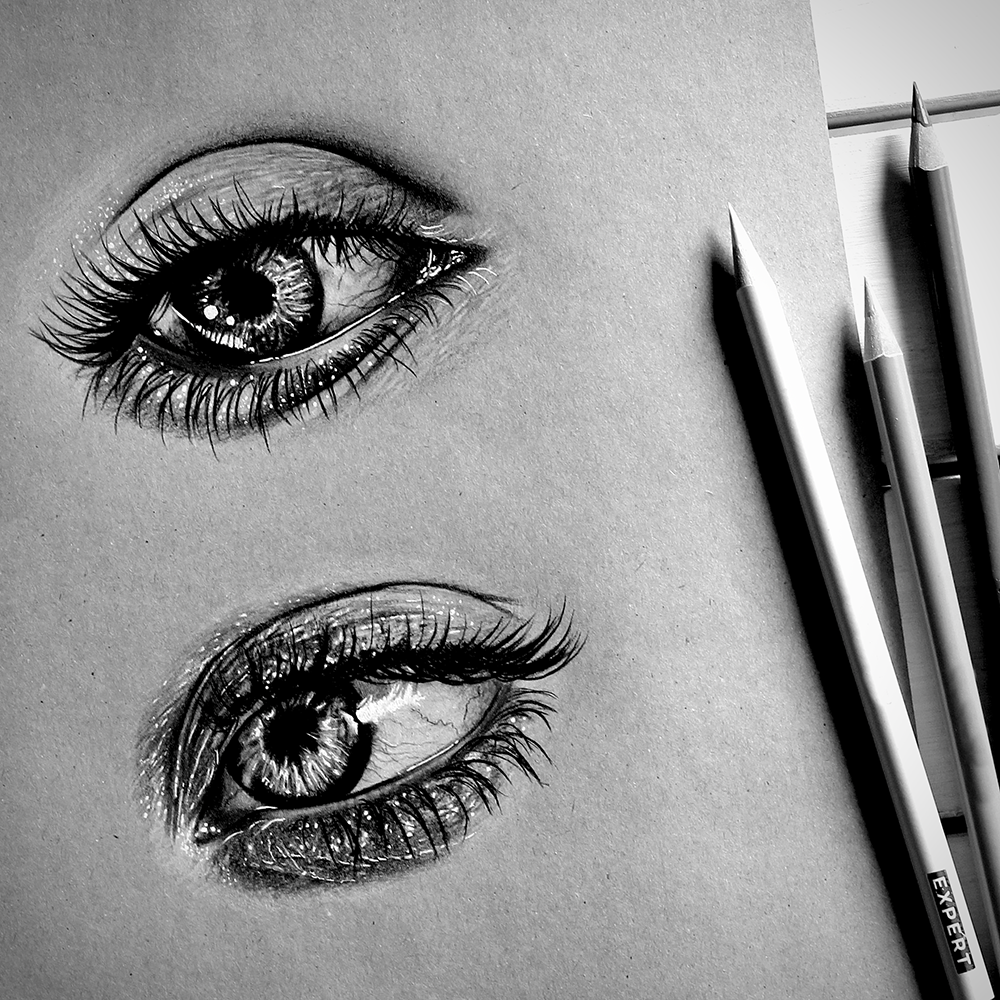
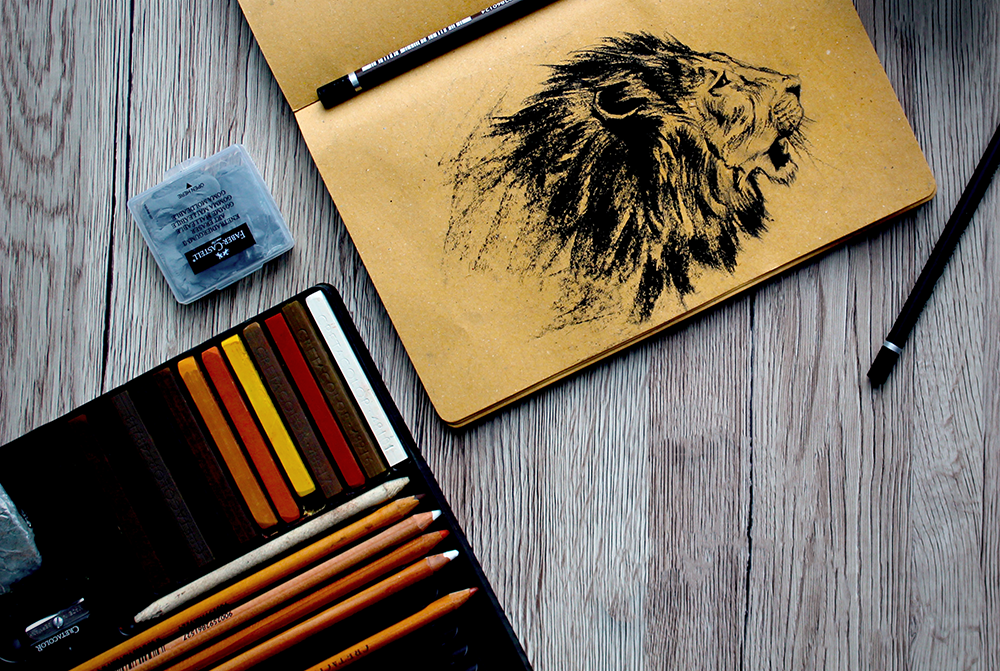
Creating Charcoal Art
Charcoal is a great medium for artists of all levels.
It's forgiving, easy to use, and it produces beautiful results.
The more you draw with charcoal, the better you'll become at it.
We hope this blog post has given you a better understanding of what charcoal drawing is and how to get started with this medium.
Remember to experiment with different types of charcoal and strokes until you find a style that you're comfortable with.
And most importantly, don't forget to have fun!

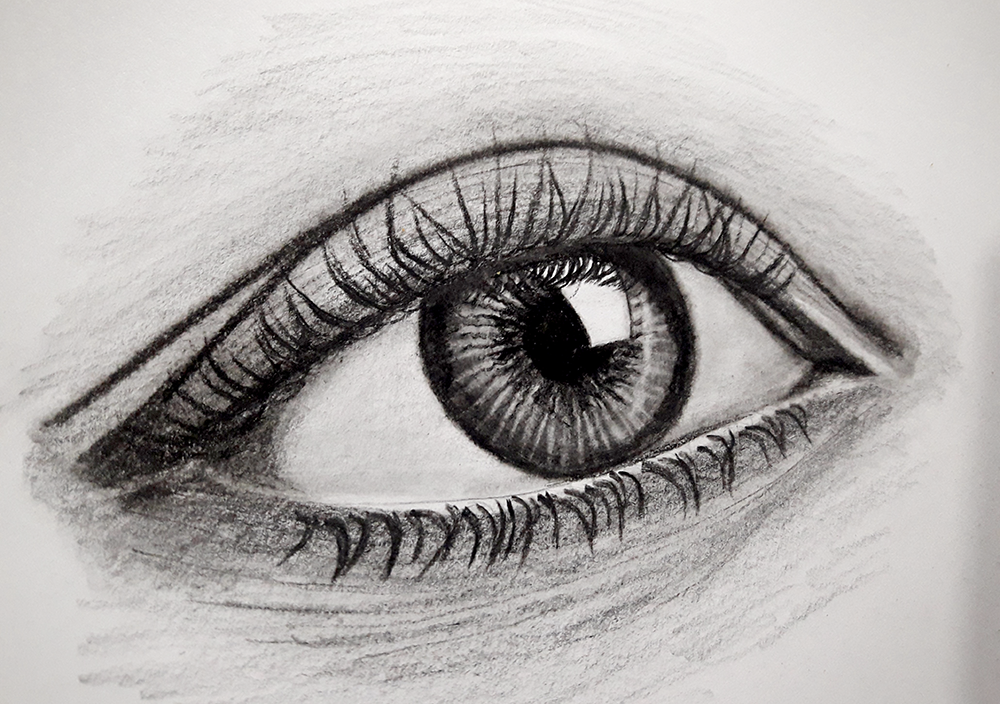
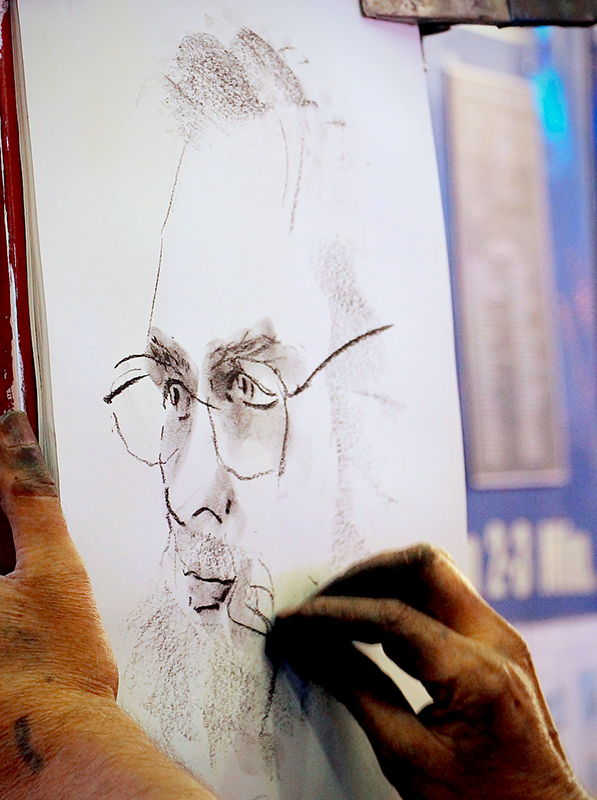
Interested in learning more about creating charcoal drawings? Check out Kirsty Partride Art's video!
Want even more content about creativity and art?
Be sure to check out all of our creative chronicles!
Eager to create with charcoal?
Check out some of our other articles:
